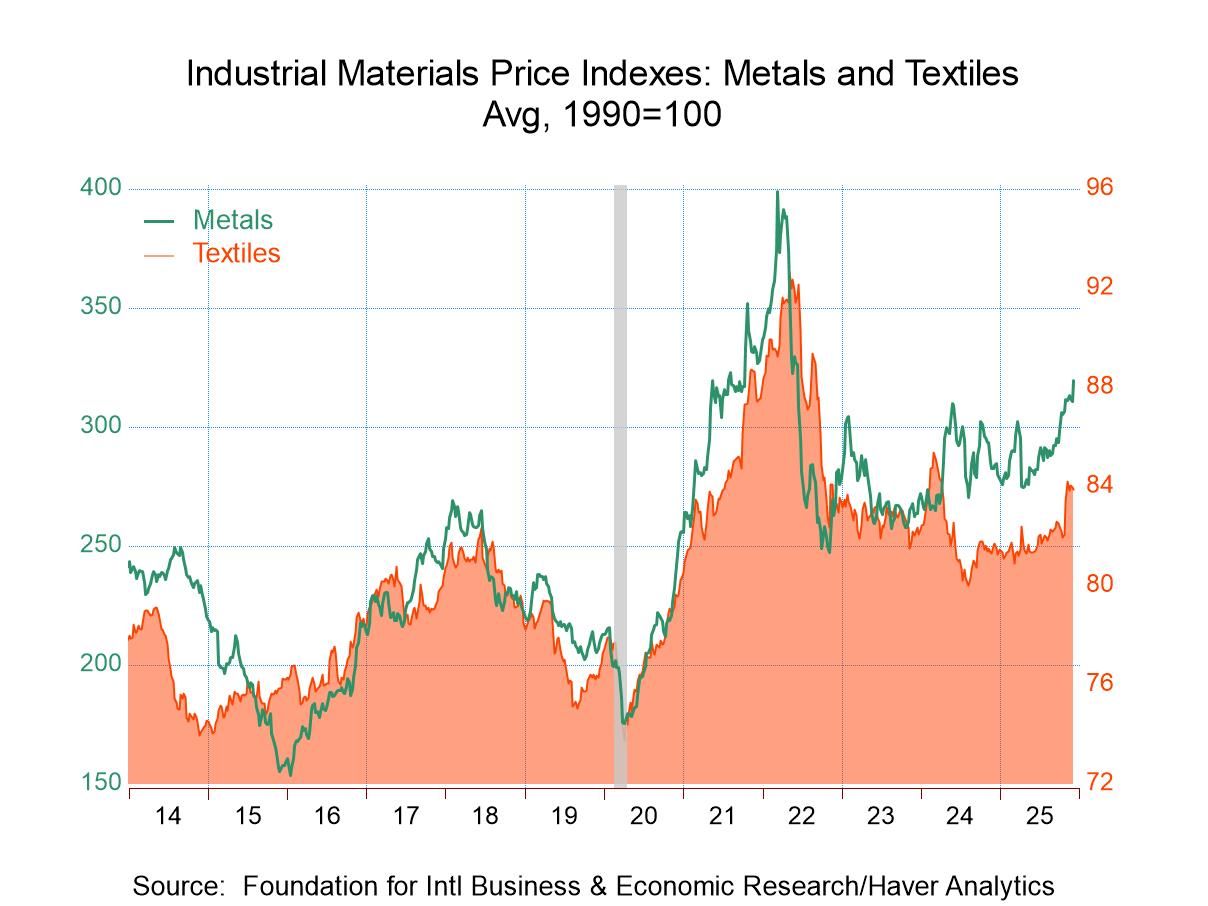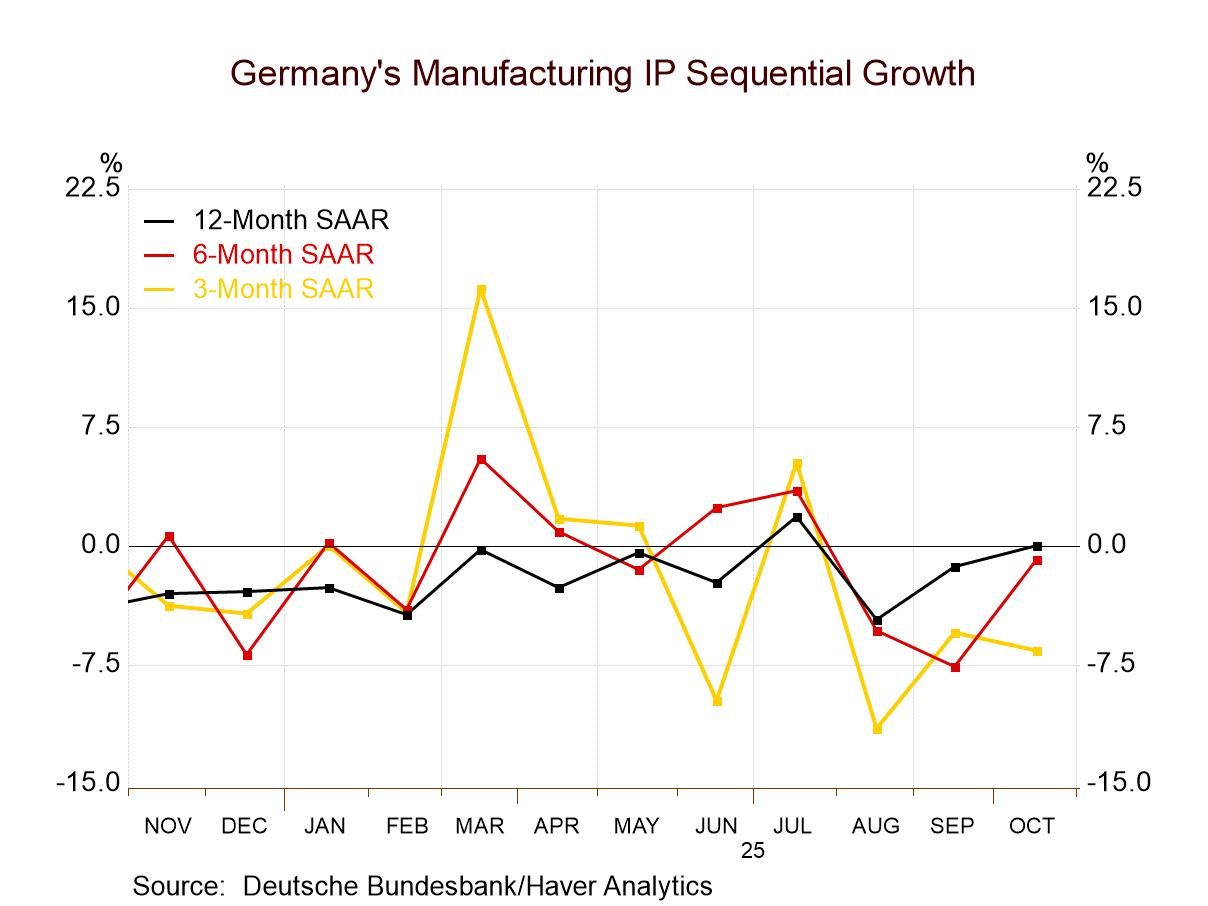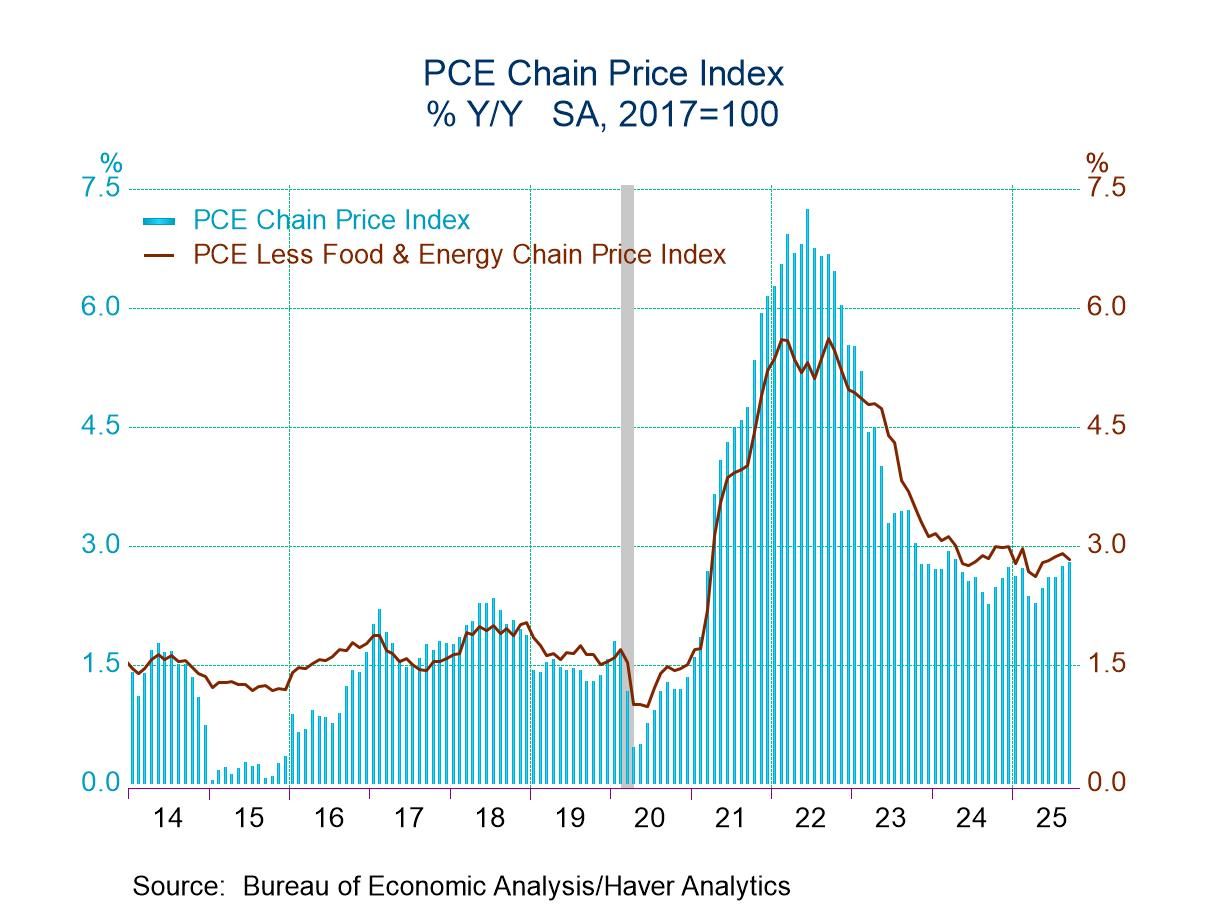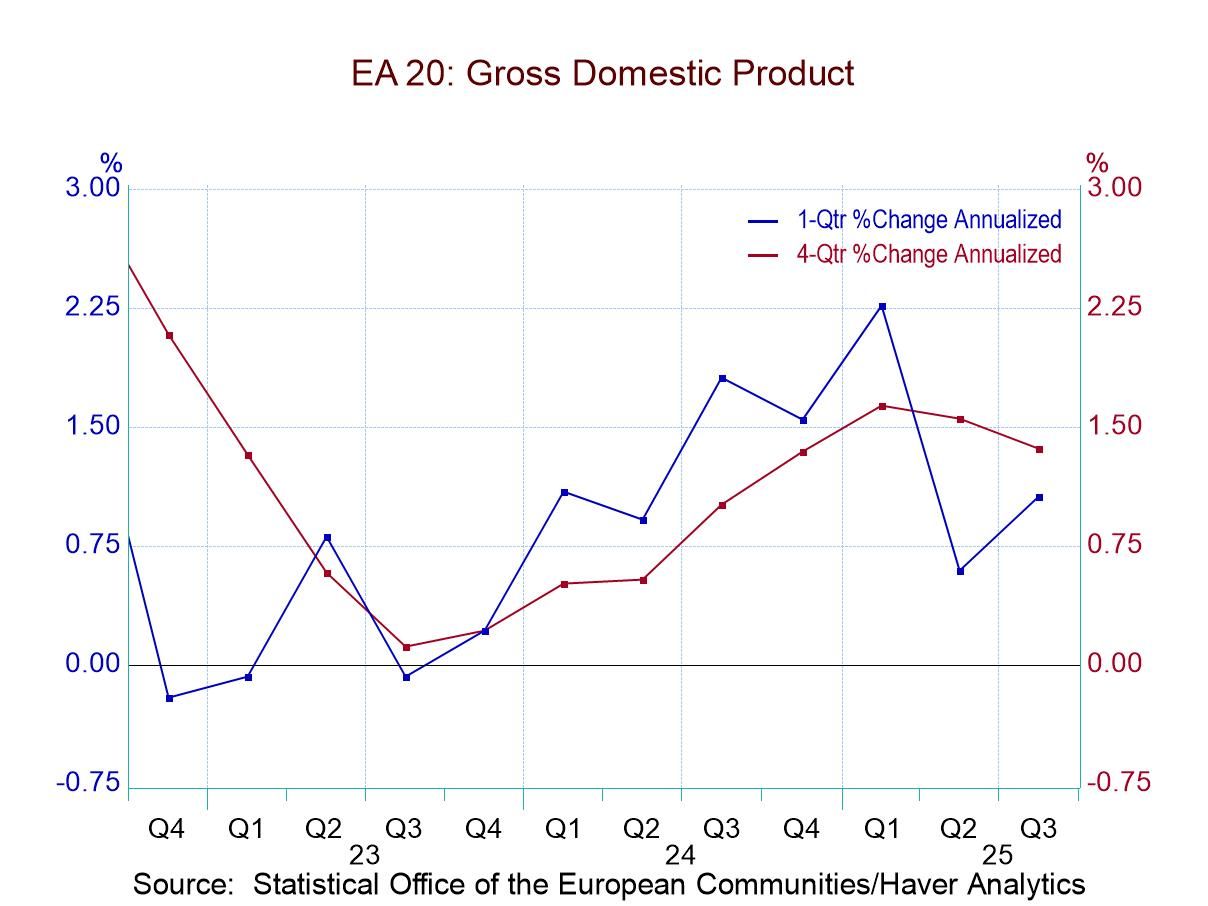ADP Employment & Wage Gains Slow in January
by:Tom Moeller
|in:Economy in Brief
Summary
- Trend growth in employment continues to weaken.
- Service sector job growth slows. Goods producing steady.
- Pay increases continue to slow.


The ADP National Employment Report indicated that nonfarm private sector payrolls rose 107,000 during January after increasing 158,000 in December, revised from 164,000. A 135,000 January gain had been expected in the Action Economics Forecast Survey. The 1.9% y/y increase compares to 3.1% in 2022. Growth slowed further to 1.1% (AR) during the last three months. The data reflect benchmark revisions.
Small business hiring (less than 50 employees) increased 25,000 (1.9% y/y) this month, the same as in December. Employment at medium-sized firms (50-499,000 employees) rose 61,000 (2.0% y/y) in January after increasing 69,000 in December. The gain remained below a 220,000 June high. Large business hiring (500+ employees) rose 31,000 (1.5% y/y) during January following a 36,000 December rise. Large payrolls rose an average 43,000 during the last four months.
By industry group, goods-producing employment rose 30,000 (2.1% y/y) after a 31,000 December gain and a 33,000 November decline. The number of construction sector jobs rose 22,000 (4.8% y/y), about the same as in December. Hiring in the manufacturing sector edged 2,000 higher (-0.9% y/y) this month after rising 3,000 in December. Natural resource & mining sector employment improved 6,000 (13.0% y/y) after a 5,000 December increase.
Service-producing jobs rose 77,000 in January (1.9% y/y) following a 127,000 December rise. It was the weakest increase since March of last year and well below June’s 425,000 increase. Leisure & hospitality employment improved 28,000 (5.5% y/y) after a 26,000 gain. Trade, transportation & utilities jobs rose 23,000 (1.1% y/y) after a 3,000 December gain. Education & health service employment grew 17,000 (3.2% y/y) after an 83,000 December improvement. Financial sector jobs rose 7,000 (0.9% y/y) for the second consecutive month. Professional & business service jobs edged 2,000 higher (-0.3% y/y) following a 3,000 increase. Continuing to restrain the overall service sector gain, information sector employment fell 9,000 (-1.9% y/y) after falling 5,000 in December.
Growth in median annual pay for "job stayers" eased to 5.2% y/y in January from 5.4% y/y in December, remaining well below a September 2022 high of 7.8% y/y. The earnings slowdown continued to be led by the leisure & hospitality sector, where a 6.3% y/y pay gain in January compared to 16.9% y/y growth in March 2022. Construction sector pay grew a reduced 5.6% y/y and remained below February 2023 high of 7.1% y/y. Education & health services pay rose a lessened 5.9% y/y, down from a 7.3% y/y high in October 2022. Financial sector earnings rose 5.6% y/y, below a 7.8% y/y high in November of 2022, while information sector pay rose a lessened 4.5% y/y and remained below the 8.0% y/y peak in June 2022. Factory sector earnings rose a reduced 4.8% y/y versus a high of 7.8% y/y in September 2022. Pay increases for “job changers” decelerated to 7.2% y/y, below the 16.4% y/y peak in June 2022.
By Census region, employment in the South strengthened 57,000 last month (1.6% y/y) after a 63,000 December increase. The number of jobs in the Northeast rose 32,000 (2.8% y/y) after increasing 26,000 in December. The number of jobs in the Midwest increased 24,000 (2.2% y/y) after a 15,000 December gain. The number of jobs in the West improved 2,000 (1.4% y/y) after rising 11,000 in December.
The ADP National Employment Report and Pay Insights data can be found in Haver's USECON database. Historical figures date back to January 2010 for private employment. Pay data date back to October 2020. The expectation figure is available in Haver's AS1REPNA database.


Tom Moeller
AuthorMore in Author Profile »Prior to joining Haver Analytics in 2000, Mr. Moeller worked as the Economist at Chancellor Capital Management from 1985 to 1999. There, he developed comprehensive economic forecasts and interpreted economic data for equity and fixed income portfolio managers. Also at Chancellor, Mr. Moeller worked as an equity analyst and was responsible for researching and rating companies in the economically sensitive automobile and housing industries for investment in Chancellor’s equity portfolio. Prior to joining Chancellor, Mr. Moeller was an Economist at Citibank from 1979 to 1984. He also analyzed pricing behavior in the metals industry for the Council on Wage and Price Stability in Washington, D.C. In 1999, Mr. Moeller received the award for most accurate forecast from the Forecasters' Club of New York. From 1990 to 1992 he was President of the New York Association for Business Economists. Mr. Moeller earned an M.B.A. in Finance from Fordham University, where he graduated in 1987. He holds a Bachelor of Arts in Economics from George Washington University.






